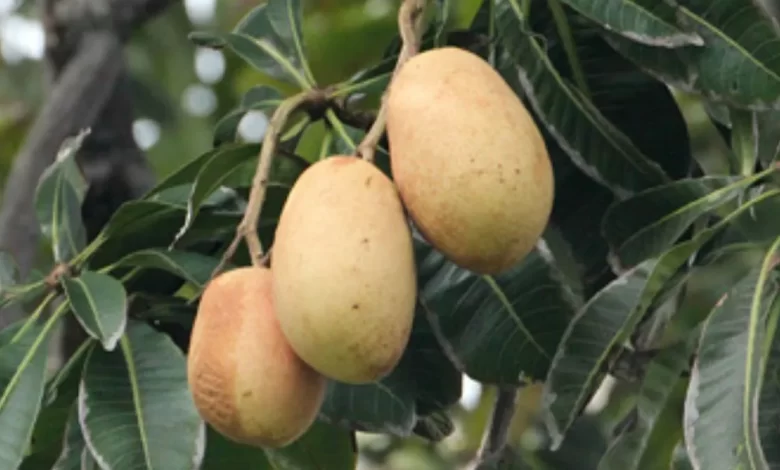Discover Nutritious and Unique White Mangoes

White mangoes, sometimes called manila mangoes, belong to the species Mangifera caesia. They are a unique mango variety native to tropical regions including Borneo, Indonesia, Malaysia, Myanmar, and parts of India.
Compared to the common yellow and red mangoes, white mangoes have pale skin that ripens to ivory, cream, or light yellow. Their flesh matches, ranging from white to pale yellow depending on ripeness. The taste is often described as mildly sour with hints of pine and turpentine.
Fully ripe white mangoes are soft and juicy with a fibrous texture similar to peaches. They are shaped like a squash and can grow quite large, up to 8 inches long and 4 inches wide. The white mango tree is an evergreen that can reach heights over 100 feet in tropical climates.
White mangoes grow naturally in hot, humid environments with year-round warmth ideal for fruit production. While still largely confined to Asian growing regions, white mangoes can thrive in orchards and gardens of other tropical locations like Hawaii, Florida, and the Caribbean.
Table of Contents
Nutritional Value of White Mangoes
What sets white mangoes apart is their unique nutritional profile. Each serving delivers a range of vitamins, antioxidants, fiber and more to provide potential health benefits.
Rich in Vitamin C
White mangoes are packed with immune-supporting vitamin C. One cup provides over 75% of the recommended daily value. Vitamin C supports immune cell function and acts as an antioxidant to counter cellular damage linked to chronic diseases.
Good Source of Vitamin A
White mangoes also contain beta-carotene, an antioxidant that is converted to vitamin A in the body. Vitamin A is essential for eye health and vision, bone growth, reproduction, and immune function.
Antioxidant Carotenoids
In addition to beta carotene, white mangoes contain antioxidant carotenoid pigments like lutein, zeaxanthin, and cryptoxanthin. These compounds defend cells from oxidative stress and lower risks for degenerative diseases.
Dietary Fiber
A single white mango provides around 3 grams of dietary fiber, primarily soluble pectin fiber. Fiber supports healthy digestion, weight maintenance, and cholesterol reduction.
Low Fat and Calories
One cup of diced white mango has only around 100 calories and minimal fat. The low energy density paired with fiber makes white mangoes ideal for weight control. Their glycemic load is also lower than other fruit.
Also Read: Papaturro: A Comprehensive Guide to the Nutritious Central American Fruit
Potential Health Benefits of White Mangoes
With their unique nutritional makeup, incorporating white mangoes into your diet provides many benefits from immunity and digestion to chronic disease prevention.
Immune System Booster
The abundant vitamin C in white mangoes helps maintain healthy immune function. Vitamin C increases disease-fighting white blood cell production and activity to bolster your defenses against viruses, bacteria, and other pathogens.
Improved Digestion
The pectin fiber in white mangoes promotes regularity and prevents digestive issues like constipation and diarrhea. White mangoes also contain prebiotic fiber to feed beneficial gut bacteria for overall digestive health.
Better Heart Health
Fiber lowers cholesterol by binding to bile acids, while potassium helps control healthy blood pressure levels. Antioxidants also protect blood vessels from oxidative damage that can lead to atherosclerosis.
Eye Health Support
Vitamin A from white mango’s beta carotene improves eye health by reducing macular degeneration risk and supporting clear vision in low light conditions. Lutein and zeaxanthin also promote retina health.
Radiant Skin
Vitamin C helps build collagen to keep skin firm and youthful in appearance. It also accelerates healing for conditions like acne and eczema. Antioxidants prevent premature aging from sun damage.
Cancer Prevention
Research indicates mango polyphenols and carotenoids inhibit cancer cell growth and tumor spread, particularly leukemia, prostate, breast, and colon cancers. More human studies are still needed however.
Culinary Uses for White Mangoes
Throughout tropical Asia, white mangoes are eaten raw at peak ripeness and used to prepare juices, pickles, salsas, chutneys, and other dishes. Here are some ways to enjoy them:
Eat Raw
Fully ripe white mangoes can be enjoyed fresh on their own. Simply peel, slice around the pit, and savor the mild sweet-sour flesh. For less ripe fruit, add a squeeze of lime.
Juices and Smoothies
Process cubed white mango in a blender with water or milk for a sweet, refreshing beverage. Combine with yogurt or ice cream for a creamy smoothie.
Pickles and Chutneys
White mangoes pair wonderfully with spices in chutney recipes. Or pickle diced white mango in brine with garlic, onions, chilies and mustard seeds for a tangy Indian-style condiment.
Salsas and Salads
Mix diced white mango with tomatoes, onion, cilantro, and lime juice for a vibrant salsa to top grilled fish, chicken, or pork. Toss slices into leafy greens for a fruit salad.
Desserts
The mild tang of white mango works well in fruit cobblers, pies, cakes, and puddings. Or freeze puree into sorbet or incorporate into ice cream.
Also Read: Borojo: The Exotic Fruit with Untapped Health Potential
Growing White Mangoes
Though native to tropical Asia, white mangoes can grow in USDA Hardiness Zones 10-12 with warm winters. They require deep, well-draining soil and full sun. Propagation is by grafting or planting seeds from ripe fruits.
White mangoes grow on large evergreen trees reaching heights over 100 feet. It may take 4-6 years for trees to begin fruiting. The harvest season for white mangoes spans spring and summer. Look for plump, unblemished fruits that yield slightly to gentle pressure when ripe.
Conclusion
Beyond their tropical beauty, white mangoes deliver a range of nutrients from vitamin C to fiber that provide many health benefits. Their adaptable nature allows gardeners in many warm regions to grow this lesser-known and uniquely flavored mango variety at home. Try using white mangoes to boost immunity, digestion, heart health, and more.
FAQs about White Mangoes
Q: What regions are white mangoes native to?
A: White mangoes originated in tropical areas of Southeast Asia and parts of India like Indonesia, Malaysia, Myanmar, and Borneo.
Q: How do you tell when a white mango is ripe?
A: Ripe white mangoes will yield slightly when squeezed and feel soft. Their skin turns from green to pale yellow or ivory when ripe.
Q: Can you use white mangoes like regular mangoes?
A: Yes, white mangoes can be swapped for yellow mangoes in recipes for juices, smoothies, salsas, chutneys, and pickling.
Q: Why are white mangoes good for you?
A: White mangoes provide key antioxidants like vitamin C along with fiber. This delivers benefits for immunity, skin, eyes, digestion, heart health, and diabetes management.
References:
Hewavitharana, A. K., Lee, S. Y., Wathugala, D. L., & De Silva, M. S. D. (2018). Nutritional assessment of underutilized M. caesia (white mango) grown in Sri Lanka. Journal of food composition and analysis, 66, 140-146.
Kittiphoom, S. (2012). Utilization of mangosteen and white mango residues for antimicrobial and antioxidant gelatin films. International journal of food properties, 15(5), 975-988.
Maisuthisakul, P., Suttajit, M., & Pongsawatmanit, R. (2007). Assessment of phenolic content and free radical-scavenging capacity of some Thai indigenous plants. Food chemistry, 100(4), 1409-1418.
Masibo, M., & He, Q. (Eds.). (2009). Mango bioactive compounds and nutritional benefits. American Chemical Society.
Müller, L., Fröhlich, K., & Böhm, V. (2011). Comparative antioxidant activities of carotenoids measured by ferric reducing antioxidant power (FRAP), ABTS bleaching assay (αTEAC), DPPH assay and peroxyl radical scavenging assay. Food Chemistry, 129(1), 139-148.
To Know more visit the below sources:
- https://www.itis.gov/servlet/SingleRpt/SingleRpt?search_topic=TSN&search_value=506472#null
- https://en.wikipedia.org/wiki/Mangifera_caesia
- https://drhealthbenefits.com/food-bevarages/fruits/benefits-mangifera-caesia
Disclaimer:
This article is written for basic and general informational purposes only. The Statements contained here have not been evaluated by the FDA and neither the efficacy of these products has been confirmed by FDA-approved research. All information presented here is not meant as a substitute for or alternative to information from health care practitioners.
There’s no guarantee of specific results and the results can vary. Users must not view the content as medical advice in any way. Users are also required to ’NOT SELF-MEDICATE’ and always consult their health care professional before taking any medicines or undergoing any treatment. DivyaAyushCare and the author will not be responsible for any act or omission by the User arising from the User’s interpretation of the content.




